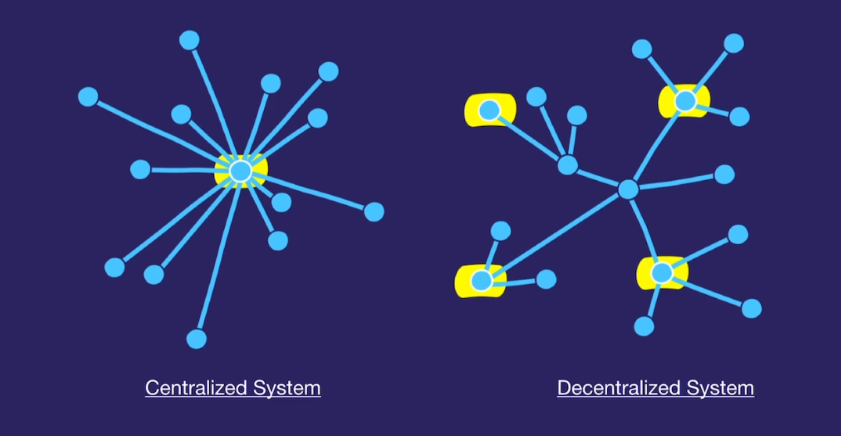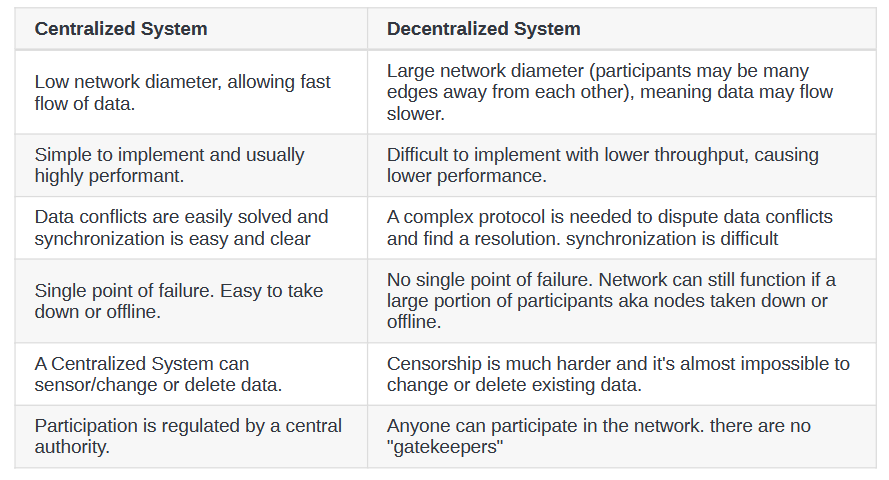Blockchain Basics: Trustless Systems — Part 2
Building on Part 1 of Blockchain Basics, let’s talk about how blockchain works as a trustless system.
Intro to Blockchains
A blockchain is a way of recording information that’s extremely hard to change, hack, or manipulate. It works like a digital ledger that keeps track of transactions, but instead of being stored in one place, it’s copied and shared across an entire network of computers. This makes it decentralized — no single person or organization owns or controls it.
Centralized Systems: No Trust, No Users
In this section, I’ll break down centralized vs. decentralized systems and why decentralization matters, especially in blockchain.
Let’s start with some examples of centralized entities: Google, WhatsApp, Facebook, Coinbase, Ethio Telecom, Amazon — the list goes on. These are all centralized systems, meaning they’re controlled by a single entity. Most of the systems we interact with today are centralized, and anything controlled by one organization can be manipulated. There’s no real fairness in a centralized system.
Take Google, for example. Millions of people use it because they trust it. They search for information, store their data, and rely on Google's services. But what happens if Google gets hacked? Suddenly, all that trust is gone, and people stop using it. Whether you realize it or not, you’re placing a huge amount of trust in the companies you use every day.
Same with Telegram — you send private messages because you trust them to keep your chats secure. But if one day, those messages get leaked? You’d probably stop using Telegram, and people worldwide might do the same. Trust is the foundation of any centralized system.
Now, you might be wondering why I included Coinbase in this list. Isn’t it a crypto exchange? Doesn’t that mean it’s decentralized? Not at all. Coinbase is centralized, just like a bank. They control your account, and if they decide to ban you, freeze your funds, or change their fees, there’s nothing you can do about it. Just because a company deals with crypto doesn’t mean it’s decentralized. Keep that in mind.
Decentralized Systems: No More Blind Trust
As you can see in the image below, decentralized systems aren’t controlled by a single entity. Let’s start with a formal definition:
“it is the process by which the activities of an organization, particularly those regarding planning and decision making, are distributed or delegated away from a central, authorities location or group.”
The image explains this concept well.

Now, here’s where things get interesting — decentralized systems allow for trustless interactions. In a decentralized system, you don’t need to trust a single company, government, or organization. Instead, you trust the network itself — made up of many independent participants. The security comes from cryptography, algorithms, consensus mechanisms, and the technology behind the network. This means decentralization significantly reduces the need for trust in any one party. The system works because of the rules embedded in the code, not because you “trust” a company to do the right thing.
Pros and Cons of Decentralization
Like everything in life, decentralization has both advantages and disadvantages. Let’s lay them out in a simple table:

Thanks for reading! If you haven’t already, check out Part 1, where I break down Web1, Web2, and Web3 and how they evolved over time:
Want to get into DeFi yield and airdrop farming? Don’t have time? Don’t know where to start?
Join our newsletter and private group of 300+ DeFi farmers for simple, top 5-minute yield opportunities — plus get our 400+ airdrop database as a bonus!
Blockchain Basics: Trustless Systems — Part 2 was originally published in The Capital on Medium, where people are continuing the conversation by highlighting and responding to this story.
from The Capital - Medium https://ift.tt/faqcvdl
0 Comments